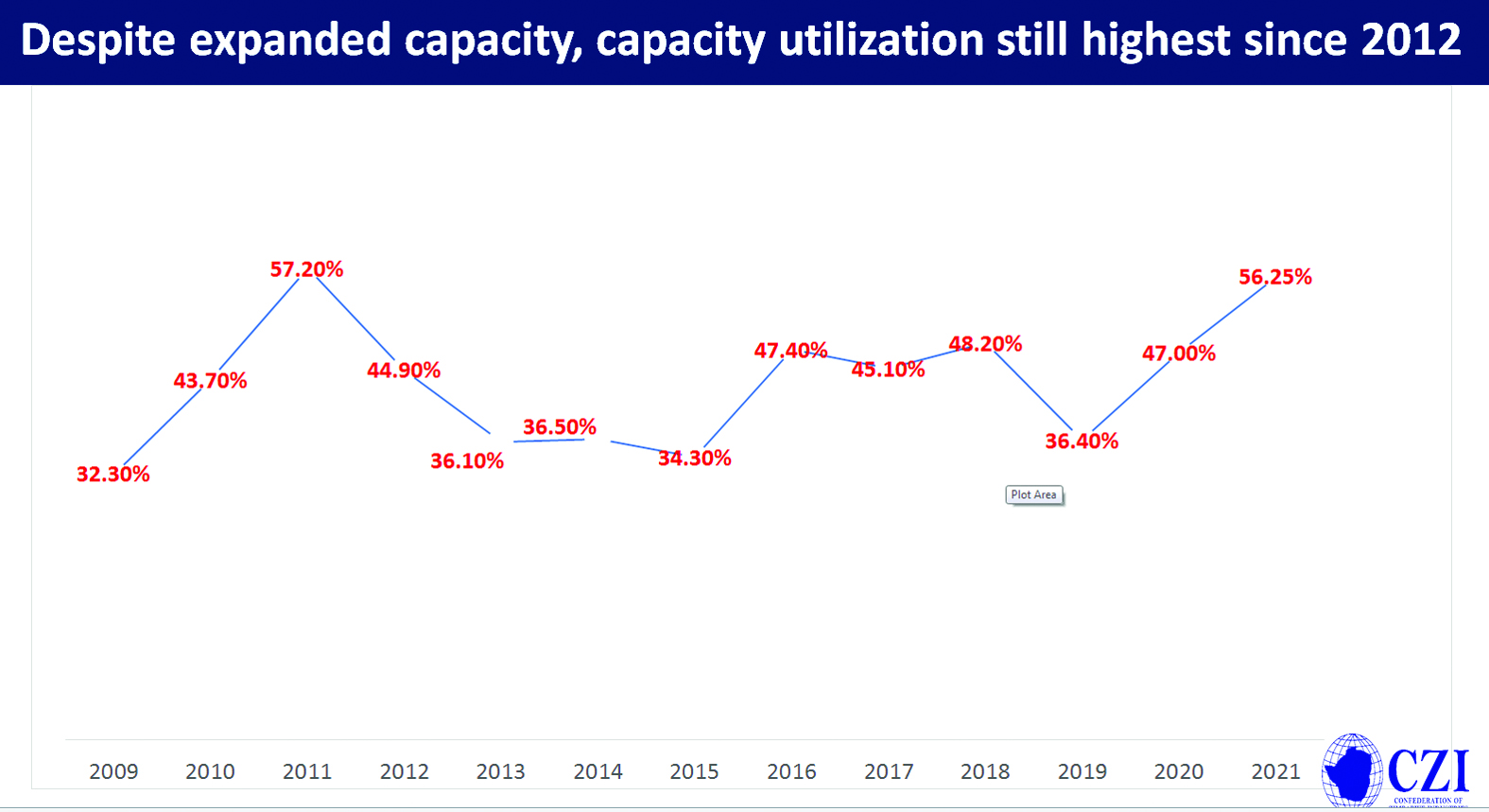
MTHANDAZO NYONI ZIMBABWE’S manufacturing sector realised a 5,5% increase in exports to US$404 million in 2021 after firms were able to access cheaper foreign currency from the forex auction system introduced by the central bank in June 2020.
Launching the Confederation of Zimbabwe Industries (CZI) manufacturing sector survey 2021 report this week, Industry and Commerce minister Sekai Nzenza said the manufacturing sector was poised for growth.
The country’s industrial capacity utilisation increased by 25,6% to 56,25% last year, despite the Covid-19 pandemic disrupting supply chains in the period.
In 2020, capacity utilisation stood at 47%, up from 36,4% the previous year.
“Testimonial to this, the manufacturing sector has realised a 5,5% increase in exports from US$383 million in 2020 to US$404 million in 2021,” she said.
“I am told that the survey is now based on 440 manufacturing sector firms that form a nationally representative sample, including both members and non-members of CZI.
“We welcome the recent survey on the SMEs (small to medium enterprises), which revealed that the sector is operating at 54% capacity utilisation and is poised for growth as it contributes significantly to the GDP of the country, through linkages with large firms and taking advantage of our enabling environment,” Nzenza said.
She said the survey showed positive signs of sustained growth of the manufacturing sector.
- Chamisa under fire over US$120K donation
- Mavhunga puts DeMbare into Chibuku quarterfinals
- Pension funds bet on Cabora Bassa oilfields
- Councils defy govt fire tender directive
Keep Reading
“This is quite evident given that the majority of the firms (56%) registered an increase in output produced in 2021, with the average increase in output being 30%,” Nzenza said.
“In addition, in response to the enabling business environment, about 38% of companies in the manufacturing sector undertook investments to increase their production capacity in 2021.
“These investments created additional capacity of 25,6%. Capacity utilisation was lower than the targeted 61% mainly due to the inclusion of small-scale players in the survey sample.
“Capacity utilisation for large-scale manufacturing sector firms was 62,7%,” she said.
With respect to employment creation, Nzenza said the majority of firms created new jobs in 2021, with the new jobs constituting about 19% of total employment.
Only 16% retrenched, with the rest maintaining their employment levels.
“This strong manufacturing sector performance in 2021 can be attributed to the favourable government policy of allowing foreign currency access to industry, which had been one of the key constraints in previous years,” she said.
Nzenza was optimistic that business would continue to support government policies despite harsh economic measures announced by President Emmerson Mnangagwa last week.
Presenting the survey report results, CZI chief economist Cornelius Dube said the majority of the firms registered an increase in output compared to 2020.
For instance, 56% surveyed firms registered an increase while 26% registered a decrease and 18% remained the same.
About 57% of the manufacturing sector firms registered an increase in sales with the drinks and tobacco subsector taking a lead.
Dube said 37,8% of the manufacturing sector undertook investments to increase their production capacity in 2021.
As such, an additional capacity of 25,6% was created in the period under review due to the investments that were undertaken.
The total amount of investments that were carried out in 2021 to increase capacity by surveyed firms amounted to US$147,17 million.











